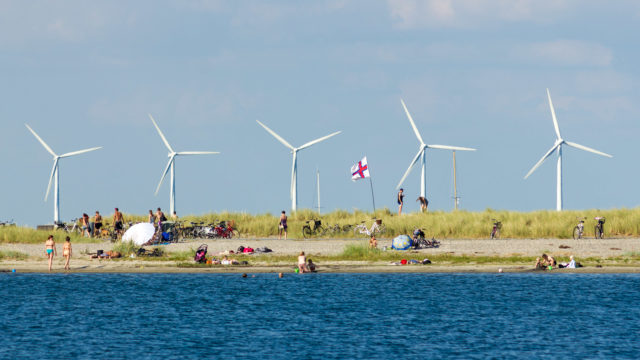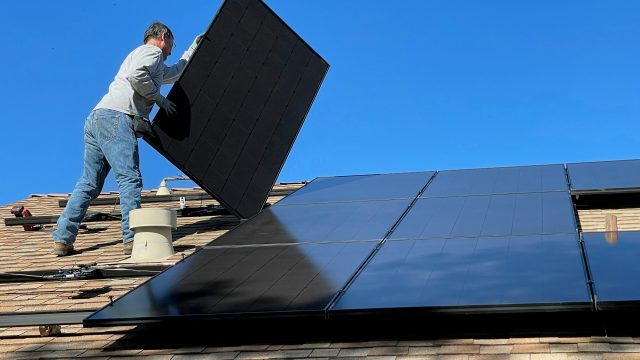Green Economy and COVID-19: the stakes
Our Green Economy Tracker tool sets out 20 key policies for governments to build back better from the crisis. How are they shaping up?

The COVID-19 crisis has thrown economies around the world into uncharted waters. The normal rules for policy no longer apply – health outcomes suddenly matter more than economic ones, and fast, decisive policy responses are paramount. Despite these challenges, we are starting to see progress in parts of the world that have successfully ‘bent the curve’ away from an uncontrolled pandemic and towards reopening of society, reassessment of our flagging economies, and a cautious new normal.
Amidst this uncertain context that there has been wide interest in ‘building back better’ after the COVID storm – a chance to use the crisis to build back our economies greener than before and tackle climate change, biodiversity and social inclusion. This push has not been restricted to campaigners, but also driven by businesses, academics, and influential economic actors like McKinsey & Co. and the OECD. There are at least three good reasons why these different groups are all insistent that governments must prioritize an inclusive green economy in their COVID-19 response.
Three good reasons for green economy
The first is time, or the lack of it. Climate change has been described as a slow motion pandemic. While the COVID-19 crisis has rightly pushed back international climate negotiations and action in the short-term, it hasn’t reduced the urgency of overhauling our economies and resetting our relationship with nature. We now have more to do in less time. It’s also notable that while carbon emissions have fallen with our shuttered economies, they haven't fallen far – and have already started to bounce back.
The second reason is limited state capacity - governments are now juggling even more priorities than usual. Ensuring that health and stimulus policies take the environment into account is essential to help manage this burden and reduce the number of siloed policy measures. A small measure of additional effort at the planning stage can offer substantial returns for policy coherence in the longer term.
“ Few areas of life have been left untouched by the crisis, and COVID-19 will undoubtably be seen as inflection point for society. But the revolution is only partial.”
The third reason is financial – debt. Governments are rightly using substantial public spending to support health care systems and protect jobs while we get through the peak of the crisis. This debt burden is no free lunch - especially for emerging and developing economies - and governments will face choices and opportunity costs in how they deploy scarce ‘fiscal space’ in future, potentially compromising essential investment in the transition to greener economies.
But these constraints aren’t inevitable. By aligning policy with green objectives and introducing green conditionality (at the right stage) for bailouts or investments, governments can ensure momentum toward a green economy is maintained. They can also avoid building their growth prospects on an unstable foundation of imminently stranded assets and high carbon sectors.
The three phases
A helpful frame to make sense of what COVID-green economy alignment means is to look at economic response to COVID in terms of three phases. An initial stabilization phase to support the economy and keep it alive during lockdown, a stimulus phase where a flood of spending is needed to jumpstart economic activity once it is safe to resume, and a new normal recovery phase where more resilient and sustainable mode of economic activity is entrenched. But different priorities and policy areas will matter in each phase, depending acuteness of the health and economic crisis we all face.

Few areas of life have been left untouched by the crisis, and COVID-19 will undoubtably be seen as inflection point for society. It will be tempting to see ideas, solutions, politics framed as ‘before COVID’ or ‘after COVID’; but the revolution is only partial. The world has changed, but we have not reset our environmental and economic challenge to a ‘year zero’. The challenges of building a greener economy are just as pressing as before, and many of the policy solutions from before are consequently as relevant as ever. COVID simply challenges us to provide a new framework and new gearing.
The new tool
To help make sense of the policy solutions in play, at the start of 2020 the Green Economy Coalition launched the Green Economy Tracker, a new and unique tool which aims to track the best practice green economy policies that are beginning to be adopted around the world. It is the first tool of its kind put civil society at the centre of benchmarking national readiness for the green transition.
Developed in collaboration with our coalition members, the tool focuses on 20 key green economy policies in 20 countries around the world - covering different regions, contexts and levels of economic development. These key green economy policies are built around the framework of the GEC’s five themes - Governance, Finance, Sectors, People and Nature - which help to define the scope of what a greener economy means in policy terms, and what an ambitious transition can look like in practice.
In the midst of the COVID crisis these five themes and the Tracker policy framework remain as important as ever. As Part 2 of this article will show, when seen through the lens of the three phases of response the Tracker’s themes and policies present a vision for how an economic recovery from COVID can still be aligned with an inclusive green transition. It can still show us which policies matter, when they matter, and whether governments are strengthening (or weakening) ambition at this crucial turning point.
Will we Build Back Greener in each phase of the recovery? It's up to us.
- Chris Hopkins, Green Economy Coalition
Photo by Ben Garratt on Unsplash


